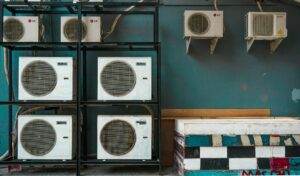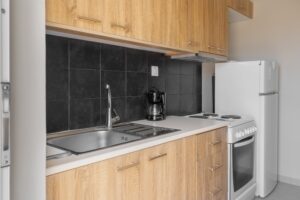A refrigerator is an essential appliance in any household, and when it starts to malfunction, it can be a major inconvenience. Troubleshooting your refrigerator can help you identify and fix common problems, saving you time and money. In this blog post, we will discuss the importance of troubleshooting your refrigerator, the benefits of DIY troubleshooting, and provide an overview of the topics we will cover.
Key Takeaways
- Refrigerator troubleshooting can help you identify and fix common problems with your fridge.
- Common refrigerator problems include cooling issues, noise issues, ice maker issues, electrical issues, and door seal issues.
- To troubleshoot your refrigerator, you’ll need tools like a multimeter, a flashlight, and a screwdriver.
- Before troubleshooting, it’s important to take safety precautions like unplugging the fridge and wearing protective gear.
- Following step-by-step guides can help you troubleshoot and fix specific issues with your refrigerator, but if you’re unsure or uncomfortable, it’s best to call a professional.
Common Refrigerator Problems and Their Causes
There are several common problems that can occur with a refrigerator. One of the most common issues is when the refrigerator is not cooling properly. This can be caused by a variety of factors, such as a faulty thermostat, a clogged condenser coil, or a malfunctioning compressor.
Another common problem is when the refrigerator starts making strange noises. This can be a sign of a worn-out fan motor, a faulty condenser fan blade, or a loose component inside the refrigerator.
Ice maker issues are also common in refrigerators. If your ice maker is not working, it could be due to a frozen water line, a faulty water inlet valve, or a malfunctioning ice maker module.
Electrical issues can also occur in refrigerators. This can include problems with the power cord, the electrical outlet, or the control board.
Lastly, door seal problems can cause your refrigerator to lose its cooling efficiency. A damaged or worn-out door seal can allow warm air to enter the refrigerator, causing it to work harder to maintain its temperature.
Tools and Equipment Needed for Troubleshooting
Before you start troubleshooting your refrigerator, it’s important to have the right tools and equipment on hand. Some of the necessary tools include a multimeter for testing electrical components, a screwdriver set for removing panels and accessing internal parts, and a flashlight for better visibility in tight spaces.
Having the right equipment is crucial for successful troubleshooting. Using improper tools can lead to damage to your refrigerator or injury to yourself. It’s also important to invest in high-quality tools that will last and provide accurate readings.
When purchasing tools, consider factors such as durability, accuracy, and ease of use. Look for tools with good reviews and recommendations from professionals in the field. It’s also a good idea to invest in a tool kit that includes a variety of tools, as this can save you money in the long run.
Safety Precautions to Take Before Troubleshooting
Safety should always be a top priority when troubleshooting any appliance, including refrigerators. Before you start troubleshooting, make sure to unplug the refrigerator from the power source to avoid electrical shock. It’s also important to wear protective gloves and safety glasses to protect yourself from any sharp edges or debris.
Taking precautions before starting troubleshooting can help prevent accidents and injuries. Make sure to read the manufacturer’s instructions and follow all safety guidelines. If you are unsure about any step or procedure, it’s best to consult a professional.
During troubleshooting, it’s important to stay safe by avoiding contact with any moving parts or electrical components. Always use caution when handling tools and equipment, and never force any parts or components.
Step-by-Step Guide to Troubleshooting Refrigerator Cooling Issues
If your refrigerator is not cooling properly, there are several steps you can take to diagnose and fix the problem. The first step is to check the temperature settings on your refrigerator and make sure they are set correctly. If the settings are correct, the next step is to clean the condenser coils, as dirty coils can cause cooling issues.
If cleaning the coils doesn’t solve the problem, you can move on to checking the evaporator fan motor and the condenser fan motor. These fans are responsible for circulating air inside the refrigerator and removing heat from the condenser coils. If either of these fans is not working properly, it can cause cooling issues.
If the fans are working fine, the next step is to check the compressor. The compressor is responsible for compressing the refrigerant and circulating it through the system. If the compressor is not running or is running but not cooling, it may need to be replaced.
Step-by-Step Guide to Troubleshooting Refrigerator Noise Issues
If your refrigerator is making strange noises, it can be quite annoying. To troubleshoot noise issues, start by identifying the source of the noise. Is it coming from the inside of the refrigerator or the back? Is it a constant noise or does it occur intermittently?
Once you have identified the source of the noise, you can start troubleshooting. If the noise is coming from the inside of the refrigerator, it could be due to a faulty fan motor or a loose component. Check the fan motor and tighten any loose components.
If the noise is coming from the back of the refrigerator, it could be due to a faulty condenser fan blade or a loose condenser coil. Check these components and tighten or replace them if necessary.
If you are unable to identify or fix the source of the noise, it’s best to consult a professional. They will have the expertise and experience to diagnose and fix the problem.
Step-by-Step Guide to Troubleshooting Refrigerator Ice Maker Issues
If your ice maker is not working, there are several steps you can take to troubleshoot and fix the problem. The first step is to check the water supply line for any blockages or kinks. A blocked or kinked water line can prevent water from reaching the ice maker.
If the water supply line is clear, check the water inlet valve for any clogs or malfunctions. The water inlet valve controls the flow of water into the ice maker. If it is not working properly, it may need to be replaced.
Next, check the ice maker module for any malfunctions. The ice maker module controls the ice-making process and can be a common source of problems. If the module is faulty, it may need to be replaced.
If none of these steps solve the problem, it’s best to consult a professional. They will have the expertise and tools to diagnose and fix the issue.
Step-by-Step Guide to Troubleshooting Refrigerator Electrical Issues
Electrical issues can be more complex to troubleshoot, as they involve working with live electrical components. If you are not comfortable working with electricity, it’s best to consult a professional.
If you are comfortable working with electricity, start by checking the power cord and the electrical outlet. Make sure the power cord is securely plugged into the outlet and that the outlet is functioning properly.
Next, check the control board for any signs of damage or malfunction. The control board is responsible for regulating the temperature and other functions of the refrigerator. If it is not working properly, it may need to be replaced.
If you are unable to identify or fix the electrical issue, it’s best to consult a professional. Working with live electrical components can be dangerous and should only be done by trained professionals.
Step-by-Step Guide to Troubleshooting Refrigerator Door Seal Issues
If your refrigerator door seal is damaged or worn out, it can cause your refrigerator to lose its cooling efficiency. To troubleshoot door seal issues, start by inspecting the seal for any signs of damage or wear. Look for cracks, tears, or gaps in the seal.
If you find any damage, you can try cleaning the seal with warm soapy water and a soft cloth. This can help remove any dirt or debris that may be causing the seal to not close properly.
If cleaning doesn’t solve the problem, you may need to replace the door seal. To do this, you will need to remove the old seal and install a new one. Follow the manufacturer’s instructions for removing and installing the seal.
If you are unsure about replacing the door seal, it’s best to consult a professional. They will have the expertise and tools to properly replace the seal and ensure a tight fit.
Final Thoughts and Tips for Successful Refrigerator Troubleshooting
In conclusion, troubleshooting your refrigerator can help you identify and fix common problems, saving you time and money. By following the step-by-step guides provided in this blog post, you can diagnose and fix cooling issues, noise issues, ice maker issues, electrical issues, and door seal issues.
It’s important to take safety precautions before starting any troubleshooting. Always unplug the refrigerator from the power source and wear protective gloves and safety glasses. If you are unsure about any step or procedure, it’s best to consult a professional.
While DIY troubleshooting can be effective for many common problems, there are some instances where it’s best to call a professional. If you are unable to identify or fix the problem, or if you are uncomfortable working with electricity or refrigerant, it’s best to consult a professional.
By following these tips and guidelines, you can successfully troubleshoot your refrigerator and keep it running smoothly for years to come.
Can I Use the Troubleshooting Guide for Specific Refrigerator Problems?
Yes, the troubleshooting guide is a great resource for fixing common refrigerator problems. It provides step-by-step instructions for identifying and addressing issues such as a malfunctioning ice maker, temperature fluctuations, or a noisy compressor. Following the guide can help you resolve these issues quickly and efficiently. In addition to general refrigerator problems, the guide also covers troubleshooting Whirlpool fridge issues, ensuring that users can find specific solutions tailored to their models. By utilizing this resource, you can save time and potentially avoid costly repairs. Whether it’s a minor adjustment or a more complex fix, having access to accurate information is invaluable.
FAQs
What are some common refrigerator problems?
Some common refrigerator problems include not cooling properly, making strange noises, leaking water, and having a faulty ice maker.
How can I troubleshoot my refrigerator?
You can troubleshoot your refrigerator by checking the temperature settings, cleaning the condenser coils, checking the door seals, and inspecting the fan and compressor. Additionally, ensure that the refrigerator is level, as an uneven surface can cause operational issues. If the problem persists, consult the user manual for detailed guidance on how to fix common refrigerator issues. Regular maintenance can also extend the life of your appliance and prevent future malfunctions.
What should I do if my refrigerator is not cooling properly?
If your refrigerator is not cooling properly, you should check the temperature settings, clean the condenser coils, and inspect the fan and compressor. If these steps do not solve the problem, you may need to call a professional repair service.
Why is my refrigerator making strange noises?
Your refrigerator may be making strange noises due to a faulty fan or compressor, a clogged condenser coil, or a malfunctioning ice maker. It is best to have a professional diagnose and repair the issue.
How can I prevent refrigerator problems?
You can prevent refrigerator problems by regularly cleaning the condenser coils, checking the door seals, and avoiding overloading the refrigerator. It is also important to have your refrigerator serviced by a professional on a regular basis. Additionally, make sure to keep the refrigerator at the optimal temperature, typically between 35 to 38 degrees Fahrenheit. Understanding these tips for refrigerator maintenance can significantly extend the lifespan of your appliance and improve its energy efficiency. Regularly checking for any unusual noises or malfunctions can also help you catch issues before they become more serious.



